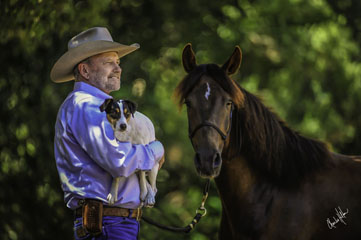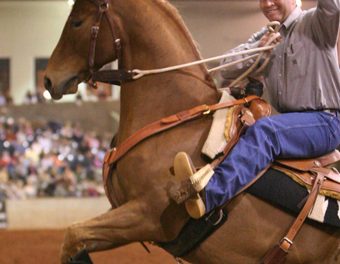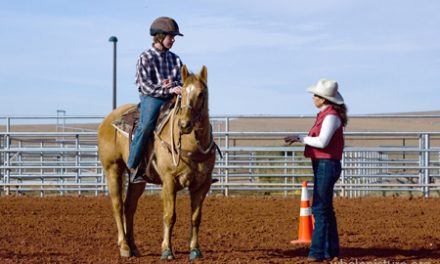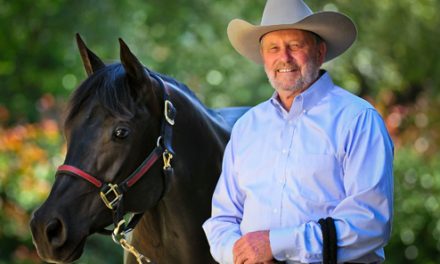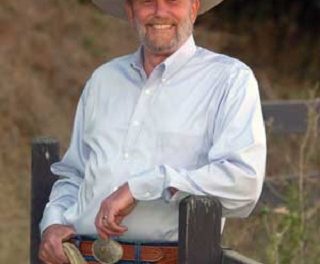After reading my article on natural horsemanship and the use of pressure and release, I received some good comments from an individual who works with Mustangs up in the Shasta area. She suggested that we look at letting go of the pressure and take more time working with each horse. Taking the time to allow a horse to let you know when you can move onto the next step in training insures that the horse is ready. When a horse is quiet and accepting of the lesson, we know we can go on to the next level of training. This approach works much better than pushing a horse and forcing it to accept something new before the previous lesson is solid and the horse is consistent in response to the cue. I really believe this and my reader does too.
When my reader is working with her Mustangs, she has had a better response working without pressure or the standard training equipment (halters, lead ropes). She works with the horses at liberty, using only her voice, eyes and hands. This is only my personal opinion but I have worked with a lot of Mustangs and many types of domesticated horses and I believe that all horses are individuals. All horses have the flight or fight instinct, some more than others. I once had a Thoroughbred come in for training and that horse had an incredible flight instinct. When I first walked quietly into the 60-foot round pen with her, she began to race around at 90 miles an hour. There was no danger of the horse hurting herself but if I had brought in a lunge whip or other piece of equipment, the horse might have run through the rails and injured herself. The emotional level of each horse dictates how much pressure the horse can tolerate and must be evaluated early in the training.
I worked once with a group starting Mustangs at the Wild Horse and Burro Expo in Reno, Nevada. I emphasize that we were only starting these Mustangs. They had two Mustangs in separate round pens. One was a little red roan that had enough curiosity that when I walked up to the round pen, she actually came up to me. Once she started moving forward, I backed away and took the pressure off her and let her know that she was doing the right thing. Though I could reach through the rails and touch her head, had I been in the pen she would have struck out or tried to bite me. Her reaction to pressure was much more fight than flight. The other Mustang was a two-year-old grey. When my focus was on the grey, just looking at her from about 75 feet away, she started snorting and moving away. She had a high flight instinct and reacted to the pressure by moving off.
When you work with horses you are always working with pressure and release as that is how a horse learns. We can see that dynamic at work when a new horse is introduced into a herd. There is always a lead horse and that horse will apply as much pressure as needed to the new horse to exert his or her authority. This pressure will escalate from a look to swinging the hind quarters around and onto a kick or a bite. Once the new horse moves off, the pressure is released. The escalation of the pressure to change behavior is a natural behavior and we utilize that same concept in training.
When you look at a horse, you are exerting a form of pressure with your body language, just as the lead horse does. Some horses, such as the Thoroughbred and the Mustang I worked up in Reno, have extreme reactions. I was working the Mustang in a 45-foot round pen and I’ll admit, I would have liked to have been in a 60-foot pen. She didn’t run into the fence and I allowed her to move around the round pen at whatever speed she wanted. If I had tried to block her and slow her, she would probably have run into the fence, tried to jump over the side of the pen, or she would have run over me. I stayed as quiet as possible, letting her continue to move around and in about 20 minutes I could see her drop from a frantic canter to a quiet canter and then to a trot. Once she was moving at a trot, with nothing in my hands, I went out ahead of her and suggested that she change directions. She told me by her behavior that I could move on with the training.
Two things you can take to the bank, one — pressure and release does work with all horses and, two — if you control a horse’s feet, you control the mind. My reader suggested that you can do this out in the pasture and I agree. It will take more time but you can do it. I have worked in a round pen or large corral and been able to teach horses to turn and face me and have eventually been able to put a halter on for the first time. It is not the size of the enclosure but what we do. Once you step into a round pen or a pasture with a horse as sensitive as a Mustang, you are exerting a form of pressure. I have worked with domestic horses that panicked at the sound of a plastic bag being rattled. I worked with one horse whose reaction was so strong that I had to start at the far end of the arena which is about 80 feet long. I work with a plastic bag to sack out a horse to teach the horse to deal with the pressure of different, scary objects and the unexpected. Sacking a horse out with a plastic bag and a tarp makes a horse much more safe on the trail where the unexpected can always occur.
There has to be a point in time, when a horse that will be ridden must submit to equipment. With the grey Mustang I worked up in Reno, on the first day I could only take hold of the lead rope attached to her halter. By the second session I taught her to lunge and stop her feet using the lead rope and halter. It took some time and it took some trust on her part but the escalation of pressure was in increments. In other words, I started with her moving away from me when I looked at her from 75 feet away. By the end of the first session I could reach the lead rope and start teaching her to yield to the pressure of something around her face. By the end of the second session I could drag a tarp around her and yes, she exhibited some flight instinct but she did not bolt.
I’ve had many horses in training considered problems but I don’t necessarily think of them as problems but as horses who have never had their emotional levels dealt with. Some horses do really well in the arena but when they get out on the trail and something unexpected happens they bolt or buck. The unexpected object or occurrence causes more pressure than anyone has dealt with, and the horse can’t handle it. The owner and the horse are not safe because the horse has not had the opportunity to learn to accept more pressure. Training must be in increments and the horse must be ready to accept the next level before something new is started.
I think everyone who successfully works with horses has an approach that works for them. I think the use of too much pressure can be cruel and abusive. You always need to think about what is best for the horse. We also need to think about who we are training the horse for. When I am training a horse for a client, I must consider the client’s skill level. I always think about what the client needs to be able to ride that horse, not just what I would need. I have a limited amount of time and the lessons must be solid. Also, there is sometimes a tendency to train a horse to respond only to us and not to other humans. Most of my clients are women and sometimes they have children who will run up to the horses. If the horses haven’t had to learn to deal with this kind of pressure, a child could get hurt. The same is true with dogs. We have several dogs on the property, including a Jack Russell Terrier, and the horses learn to deal with them. Farriers and vets love to come to this barn because the horses are always quiet and respectful.
Keep these things in mind as you work with your horse and remember that all horses are different and they have different levels of the fight/flight instinct. We need to work with each horse’s individual personality.

